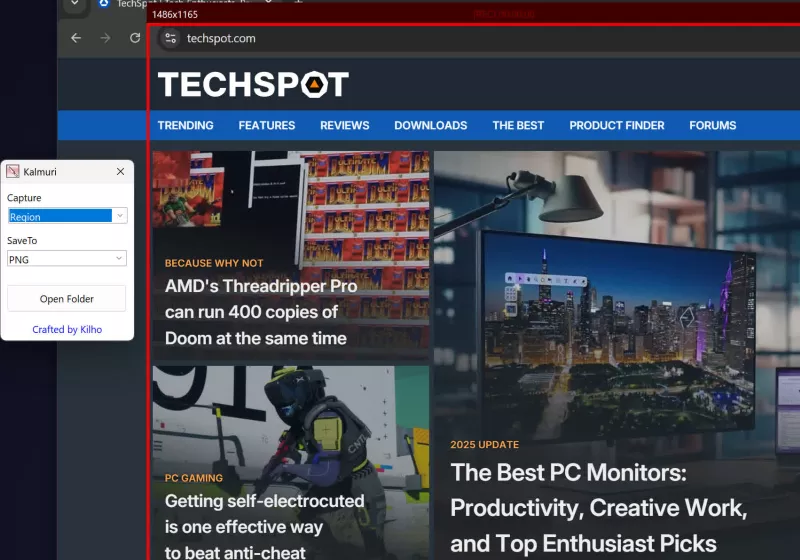It's not far-fetched to say that AI features on phones have been underwhelming for the most part. The Samsung Galaxy S24 kicked off the era of AI phones last year, and Apple followed suit with Apple Intelligence.
While Samsung offers a solid set of features with Galaxy AI, Apple is yet to make a mark with Apple Intelligence -- even opting to pull back on its machine-enhanced ambitions going into WWDC.
Also: You should use these 10 personal safety features on your Pixel phone (before it's too late)
No matter which phone you buy in 2025, you're likely to get similar AI features, including some form of image object eraser, AI summary for text and audio, translation, etc. None of these have been game-changing for me, but I may have finally found something that sticks. Enter the Honor 400, the world's first phone with Google's Veo 2 image-to-video generator baked in. Here's why that's a big deal.
How Veo 2 works on the phone
For starters, the Honor 400 isn't the most flashy phone on the market or a $1,000 feature-filled flagship. In fact, it costs half of that and is powered by a two-year-old Qualcomm Snapdragon processor. But this midranger is the first phone to have Google Cloud's Veo 2 capabilities, and the AI tool works wonders.
It can turn any photo into a five-second video with just a few taps. And it's crazy good! I'd even go as far as to say that it's scary good at converting static images to videos, making for a great tool for content creators or those who simply want more depth in their photos. Whether it be a screenshot, a photo snapped on the phone, or an image from the internet, the Honor 400 can turn it into a video. I tried it on photos of humans, scenery, pets, lamp lights, and it generated videos for all of them.
Also: This $399 Samsung Galaxy is the midrange phone most people should buy
I was surprised by the video generation capabilities because my followers throughout social media networks weren't able to tell if things were real or AI-generated. In one of the photos, the feature added a hand to make it seem like I was waving to the camera. In a separate group photo, it introduced an AI-generated person coming in from outside the frame to interact with me and my friends.
In another example, where 75% of my face was visible, the Honor 400 generated a video of me turning around and embracing the winds of the hills. It even got the style of my winter coat correct -- which wasn't originally visible because I had my back toward the camera.
The duality of image-to-video generators
Playing a photo converted into video on the Honor 400
Honor 400 can finally help people like me generate video content and build a following on social media, which is essential for many professionals these days. It could also benefit people who don't know how to edit videos or those of us who shoot more photos than videos.
Also: How to try Veo 3, Google's AI video generator that's going viral on the internet
There are times when I want to create an Instagram Reel from a vacation, but didn't shoot enough videos to make one. I rely on Live Photos to turn my still photos into short videos for Reels. But those have lower frame rate and resolution, unlike Honor 400's generations, which look really good, despite being 720p. This could help marketers, freelancers, one-person businesses, and more.
That said, I'm also scared of how good these tools have gotten. Because, unlike Live Photos, they generate things that never happened in real life. I never waved at the camera, nobody came into the frame to say hi in our group shot, and I never turned around to open my arms for the camera. None of it is real. The lines of our memories are continuing to be blurred by such AI tools.
On the flip side, they also give immense joy, like when I was able to turn a photo of my dad hugging me as a baby into a video. The Honor phone generated just enough of a sequence to retain the emotions and not take away from it. The idea of bringing precious old photos to life is quite a treat.
Also: iOS 26 isn't just about a new name and Solarium - here's what else is coming
Looking forward, Google's Veo 3 engine is expected to be even better, adding more realism to these videos through audio tracks. I'm not looking forward to a future where anyone can generate videos of me saying and doing things I never said or did. While Honor offers an AI deepfake detection feature, the problem extends to users on other -- and older -- devices, too.
What else should you know about the Honor 400
That's to say, the Honor 400 that I've been testing costs 499 Euros (approximately $565) and, unfortunately, won't be sold in the US. Still, I've found it to be a better handset than the likes of the Samsung Galaxy A56 and Google Pixel 9a in at least three ways.
First, the Honor 400 lasts longer on a single charge. I had no battery anxiety when using this phone, thanks to the 5,300mAh battery paired with 66W fast charging. It's a silicon-carbon battery, so that capacity fits inside a smaller form factor than the competition. The non-EU variant packs a 6,000mAh battery and supports 80W fast charging. I have used the EU model, and it's brilliant with battery life.
Also: I replaced my Samsung S25 Ultra with the Edge model for two weeks - here's my buying advice
Second, the Honor 400 features my favorite Harcourt Portrait mode for photography. It adds a dramatic effect to photos, which I absolutely love. While there's no dedicated telephoto camera, the 200MP primary sensor is able to capture very good-looking photos in 2x and 4x digital zoom.
Third, the Honor 400's screen is on par with some of the best Samsung phones I've tested. It features a 6.55-inch OLED panel that supports a 120Hz refresh rate, a 2736 x 1264 pixel resolution, and goes down to just 1.5 nits brightness at night. For those who are sensitive to screens, the Honor 400 features 3840 PWM to reduce eye strain. It's a sharp, bright, and vibrant display.
That said, Honor hasn't upgraded the processor in two generations; it's still powered by the same Snapdragon 7 Gen 3 chipset that was found on the Honor 200. This might seem unimpressive, but Honor is promising six years of Android OS updates for its new phone, so you can expect it to be supported till 2030.
Get the morning's top stories in your inbox each day with our Tech Today newsletter.

 2 months ago
6
2 months ago
6










 English (US) ·
English (US) ·